Best Bike Racks for MTB
Best bike racks you can buy for carrying bikes on your car
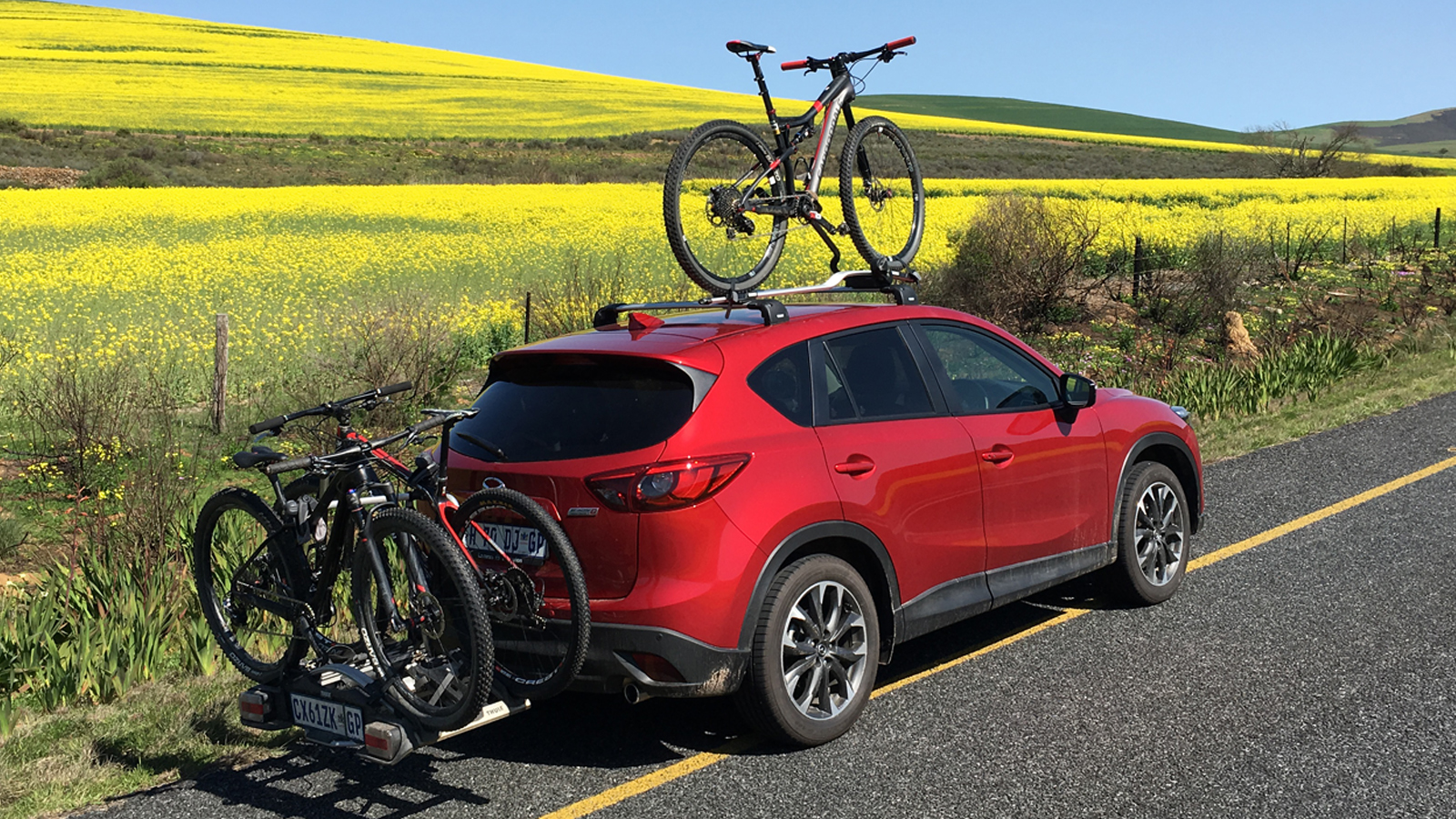
Bike racks, while simple in theory, work in a range of different ways to offer a simple benefit to us mountain bikers. Whether you're transporting bikes to and from a bike park, to your local XC race, or on a mountain bike road trip, being able to carry your bike outside the car not only leaves space for passengers but also means you don’t have to put a greasy mud-covered bike back in your car at the end of a ride.
There are a wide variety of bike racks, designed to carry your bike in different positions atop or behind your car, some being semi-permanent installations such as roof and hitch racks while others like trunk/boot racks and tailgate pads can be easily removed and stored when not in use.
The best bike rack for you will depend on your car, bikes, how many you’d like to carry, and how much you have to spend.
Scroll down to see BikePerfect's roundup of the best bike racks you can buy.
Types of bike racks
Why trust BikePerfect
1. Roof-mounted bike racks
Most roof-mounted bike racks attach to crossbars, these can be anything from the square factory rails that some cars employ, to sleek aerodynamic bars from aftermarket brands; other racks use suction cups to vacuum seal a rack to your roof.
Bikes are then secured to the roof using the frame, front-wheel, or front axle. Each of which has advantages and disadvantages; however, the key thing to consider is will you be able to lift your bike onto the roof in the first place? If you’re driving a tall SUV, getting an enduro bike on the roof and mounted into a rack can sometimes be a two-person job, so if you do drive a tall car and often ride alone, consider a hitch or tow-bar rack. Wheel-off racks will lighten the load a bit and take away some of the height you’d otherwise have to conquer, however, if you will be carrying bikes that have various axle standards and hub spacing, they can be fiddly. There are quite a few roof racks which grab onto the downtube; however, we would tend to steer away from this style as they can scratch your paintwork and in severe cases can even possibly crush the frame.
Wheel-on roof racks are great if you’re transporting bikes with various hub and axle standards, though they are a bit less stable, more expensive, and require you to lift the bike higher.
Bikes on the roof are generally safer from other drivers should you end up in an accident, just don’t forget they are up there when you get home and drive into your garage.
2. Towbar-mounted bike racks
Towbar-mounted bike-racks take advantage of the 1 1/4in or 2in receiver tube or the towbar on the back of your car and are the easiest to load of the bunch. Some towbar-mounted bike racks will fold up and out of the way when not in use and many feature locks not only for your bikes but also for securing the rack to the vehicle. In the same way, they fold for storage, these racks also feature a tilt or swing release so you can get into the back of your car without having to remove the bikes.
Unfortunately, towbar bike racks start out on the higher end of the price spectrum, and as you add in features like built-in locks, lightweight materials, integrated repair stands and taillights, the price continues to climb.
Keep in mind that these bike racks also increase the length of your car considerably, so when you stop for a post-ride cake stop, take extra care backing up.
Before you buy a towbar-mounted bike rack, make sure to double-check your local laws and regulations. In Australia for example, if the rack obscures your license plate, you’ll need an official accessory plate from the RTA, and your rack will also need to illuminate the plate so it can be seen from at least 20m away in poor light conditions. In the eyes of the law, the classic photocopy or piece of cardboard with your plate number scribbled in sharpie will earn you a hefty fine and a stern talking-to from the boy and girls in blue. That’s not all; you may also cop a fine for driving around with an empty rack on the back of your car. The moral of the story is do your due diligence before you buy a hitch or towbar bike rack so you don't have a run-in with the law.
3. Trunk and boot-mounted bike racks
These racks attach the back of your car using straps and use stabilising feet to secure it. They are the lightest and cheapest options, but generally also the least secure. With trunk/boot racks, installing the rack correctly is paramount as if you don’t have something in the right place or pulled taut it can damage the paintwork of both car and bike. These work best with bikes that have more traditional double triangle construction and can be an awkward fit for sloping top tube low standover full suspension mountain bikes.
4. Tailgate pad
If you drive a pickup truck, a tailgate pad is the best way to tote a fleet of bikes to and from the trail. It’s essentially a pad that covers both sides of your tailgate to protect the bikes and your truck from the clanging of bikes. To fit a bike, simply place the rear of your bike in the truck bed, drape the front wheel over the tailgate, and you're good to go.
The latest tailgate pads have straps to hold bikes securely, ports so you can access the latch and reverse cameras and some even have integrated gear pockets and bottle openers for post-ride 'refreshments'.
Best bike racks you can buy today
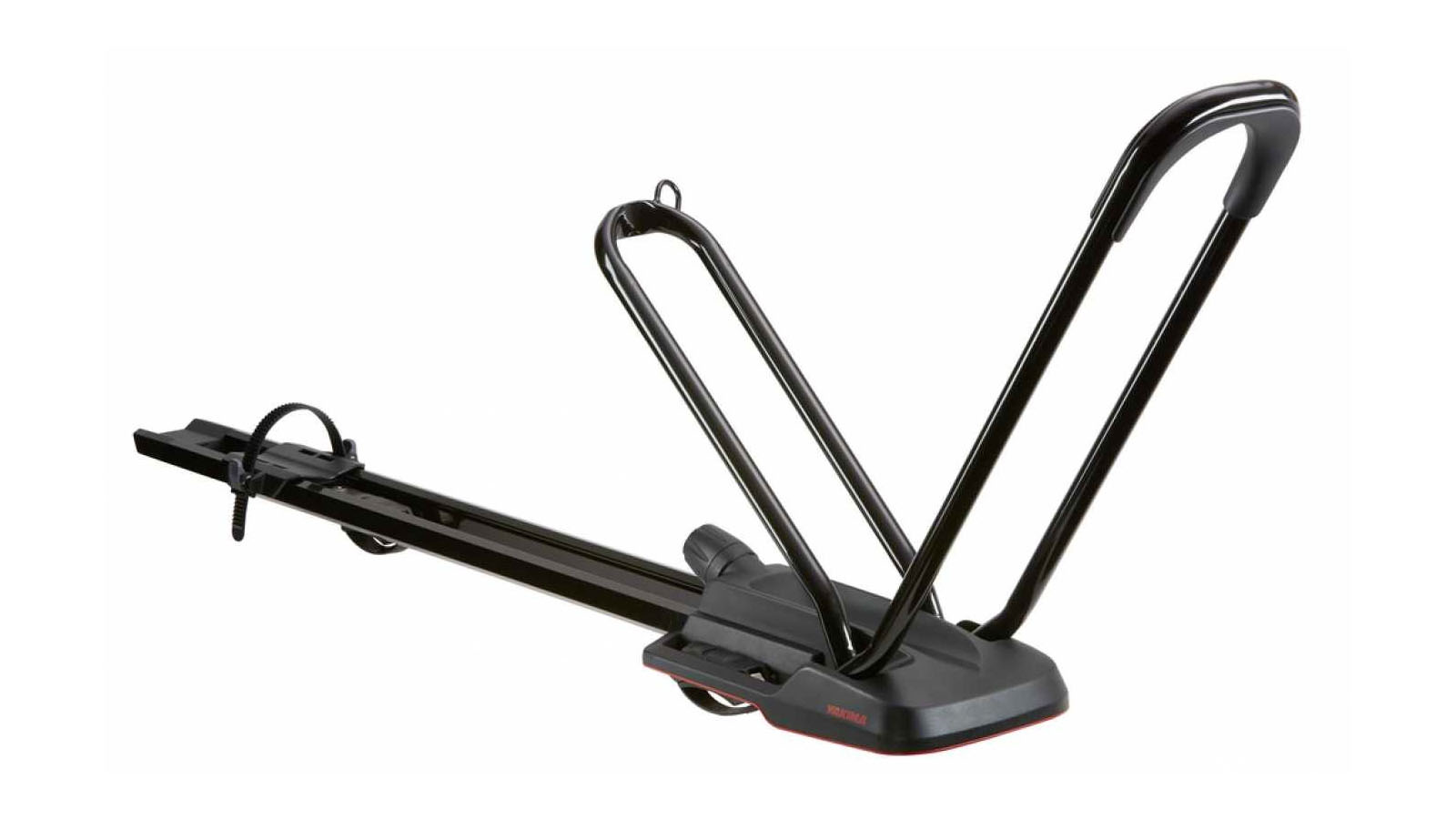
Yakima High Road
Our expert review:
Specifications
Reasons to buy
Reasons to avoid
The Yakima High Road is currently on the roof of this writer's car and is one of our favourite racks because it doesn’t touch the frame at any point and is compatible with 26- to 29-inch wheels regardless of axle standard. It’s one of the easiest roof racks to use - provided your car isn’t too tall. Flip the front wheel loop up, lift your bike in, lift the rear loop, turn the TorequeRight knob until it clicks, and secure the rear wheel with the ratchet strap.
There is no faffing with adaptors, and you don’t even need to adjust the front wheel loop to suit different wheel sizes. The rack holds bikes securely even if your trip to the trailhead involves some Overlanding.
The High Road is almost perfect except for the fact that locking barrels are not included with the rack and the design doesn’t play nice with most mudguards.
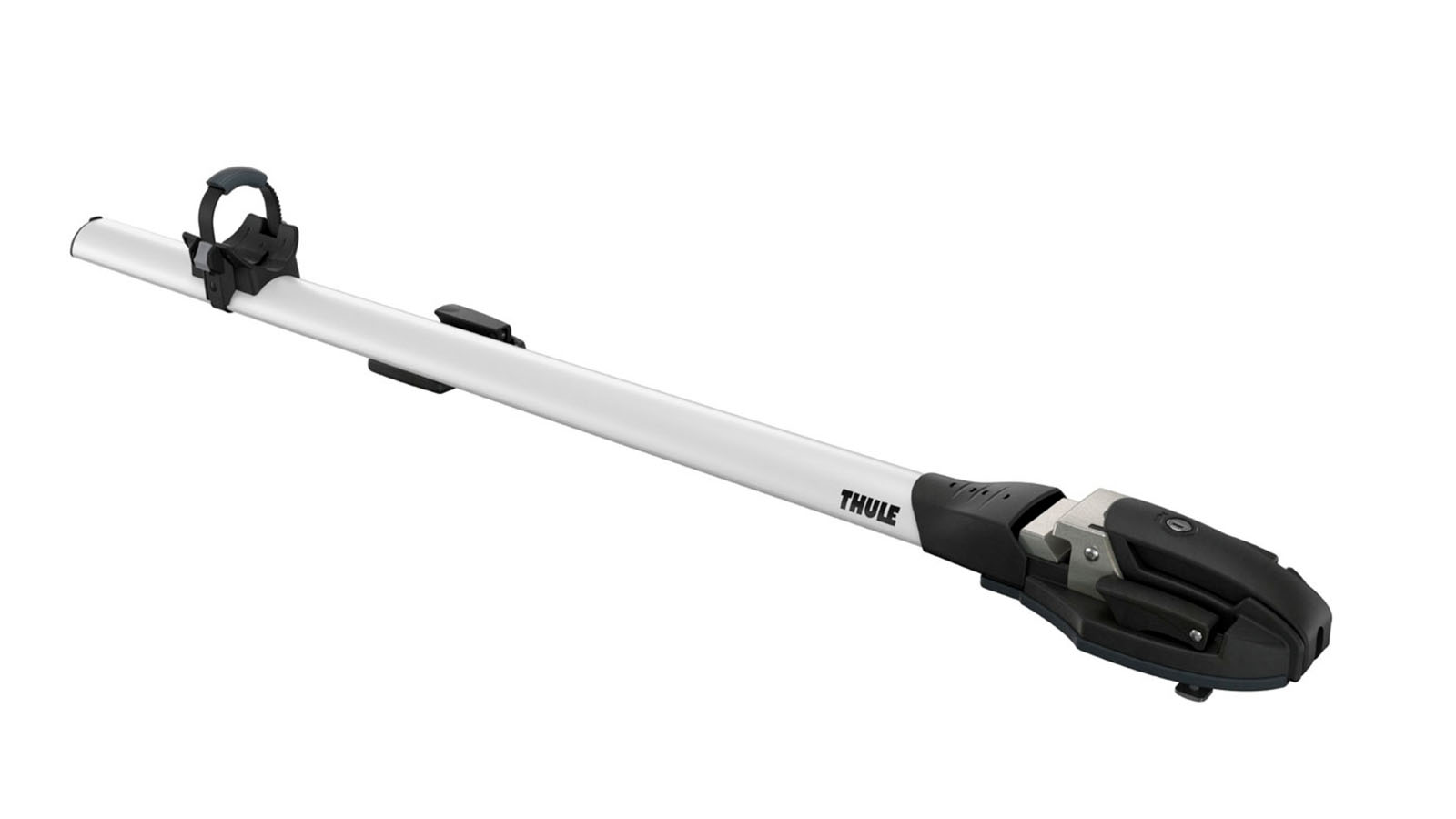
Thule ThruRide
Specifications
Reasons to buy
Reasons to avoid
Axle-mounted racks make mounting bikes on the roof a bit easier because you don’t have to lift the bike quite as high, and without the front wheel, they are a bit lighter too. The trouble is various axle, and hub spacing standards can mean lots of adaptors to change - or lose.
The ThruRide uses an adjustable clamp that can hold an axle regardless of length and diameter and doesn't need any adaptors. It takes a bit of practice to get the process down, but once you do it's a breeze and mounting the rack itself to the car is a tool-free affair.
The rack itself is aerodynamic and low profile; once it's on your car you're likely to forget it's there.
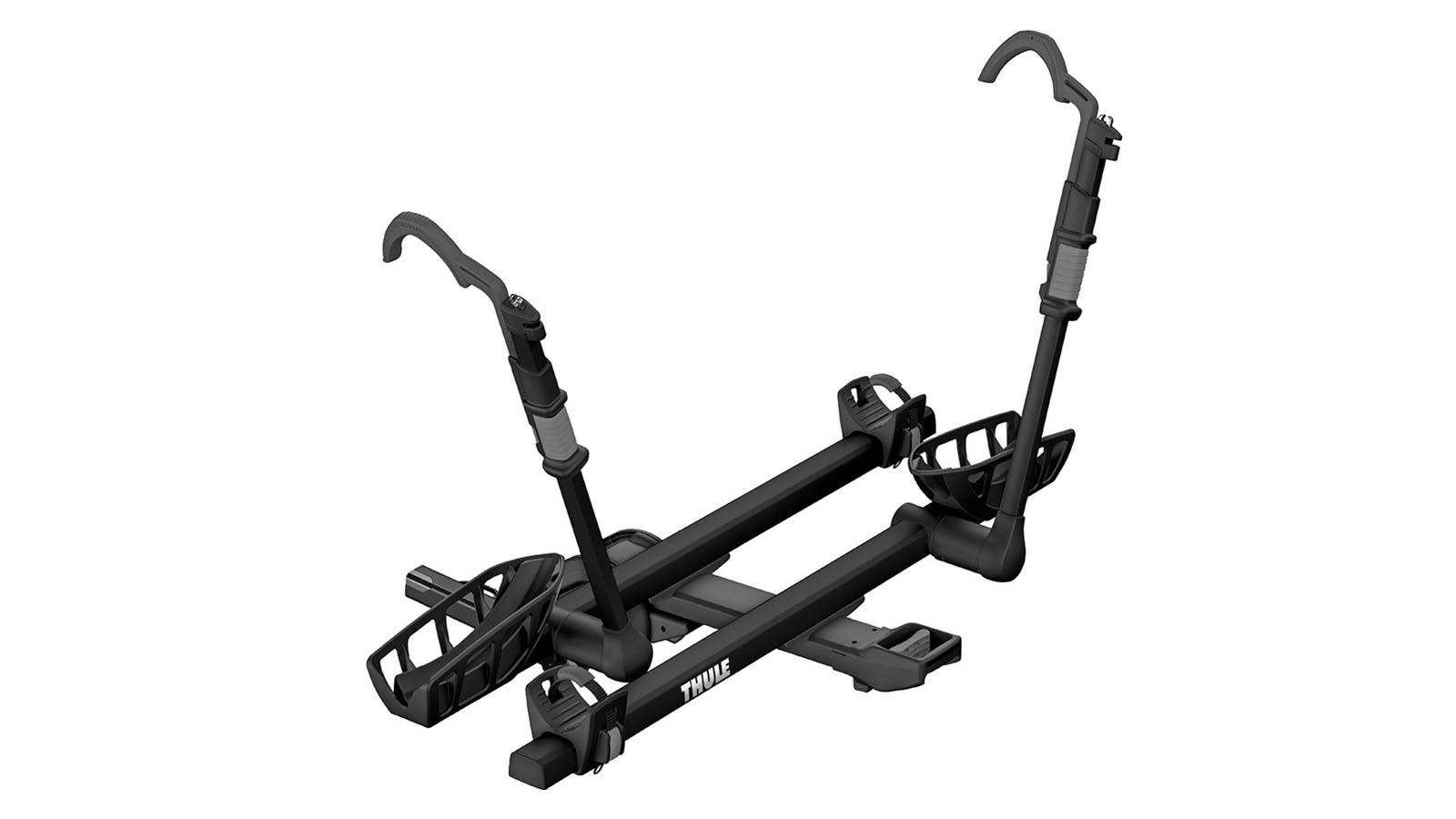
Thule T2 Pro XT
Our expert review:
Specifications
Reasons to buy
Reasons to avoid
The Thule T2 Pro XT is so well designed, a few other brands have borrowed some of its design features like the remote tilt release handle and tool-free mounting system.
It comes stock with trays for two bikes, however, it can be extended with another two trays. Bikes are secured with an extendable half-wheel hook design and a simple ratchet strap at the rear; it will work with just about any wheel size and tyres up to 5in wide.
For the latest version, Thule has increased the spacing of the wheel trays and increased lateral adjustment to help fit a wider variety of bikes.
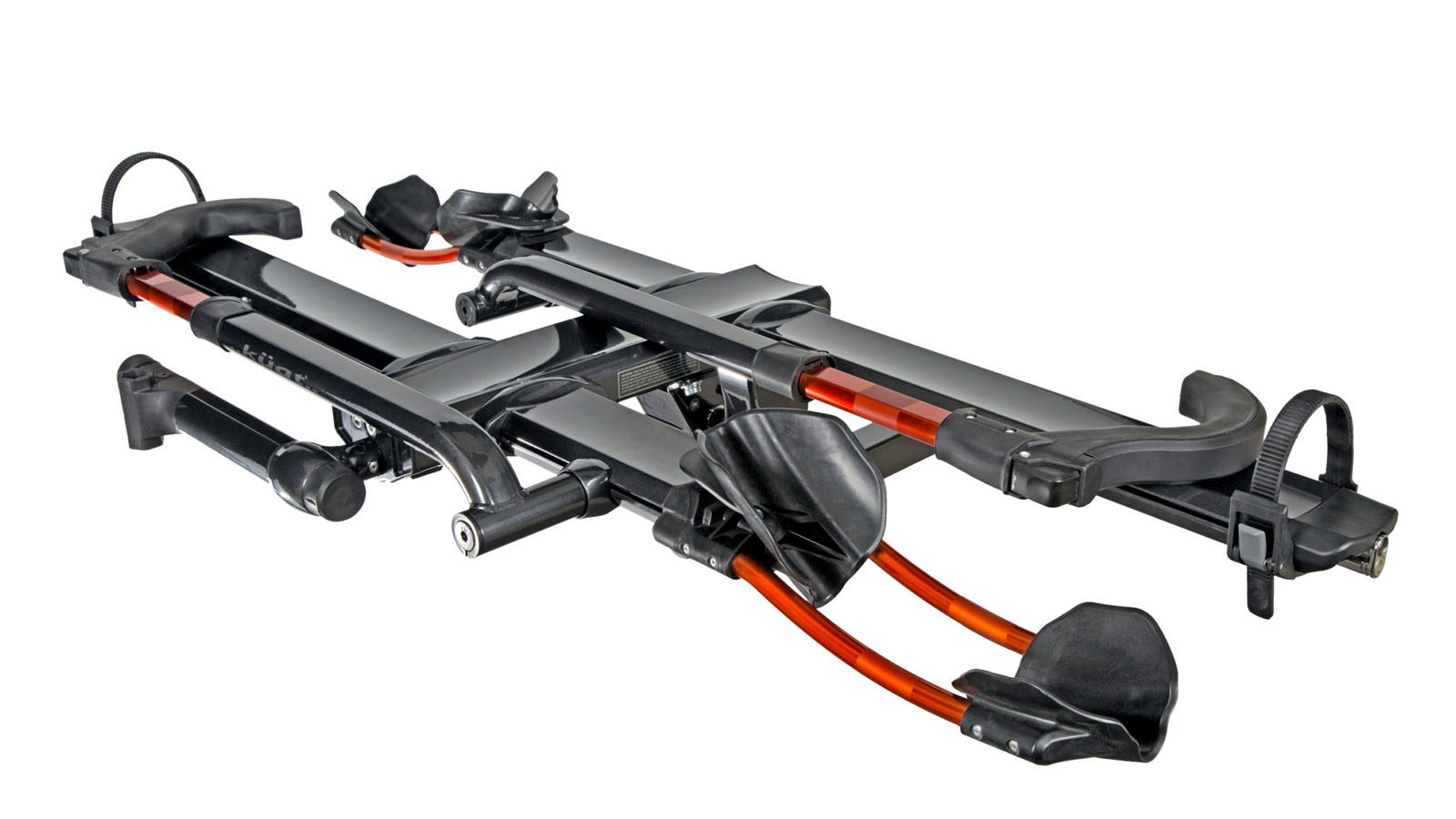
Kuat NV 2.0
Our expert review:
Specifications
Reasons to buy
Reasons to avoid
Not only does Kuat make some of the best-looking racks on the market, but its products are also some of the most feature-rich to boot.
Using a half-wheel loop design similar to the Thule Pro XT and a ratchet strap meaning it takes a range of wheel sizes and up to a 4.8in tyre. The wheel cradles are adjustable to avoid bikes bumping into each other on the rack, and there are removable cable locks.
Installation is tool-free and an expanding adaptor takes up space in your car's hitch receiver to eliminate wobbles. The tilt switch can be engaged hands-free and there is even an integrated work stand for last-minute adjustments and repairs.
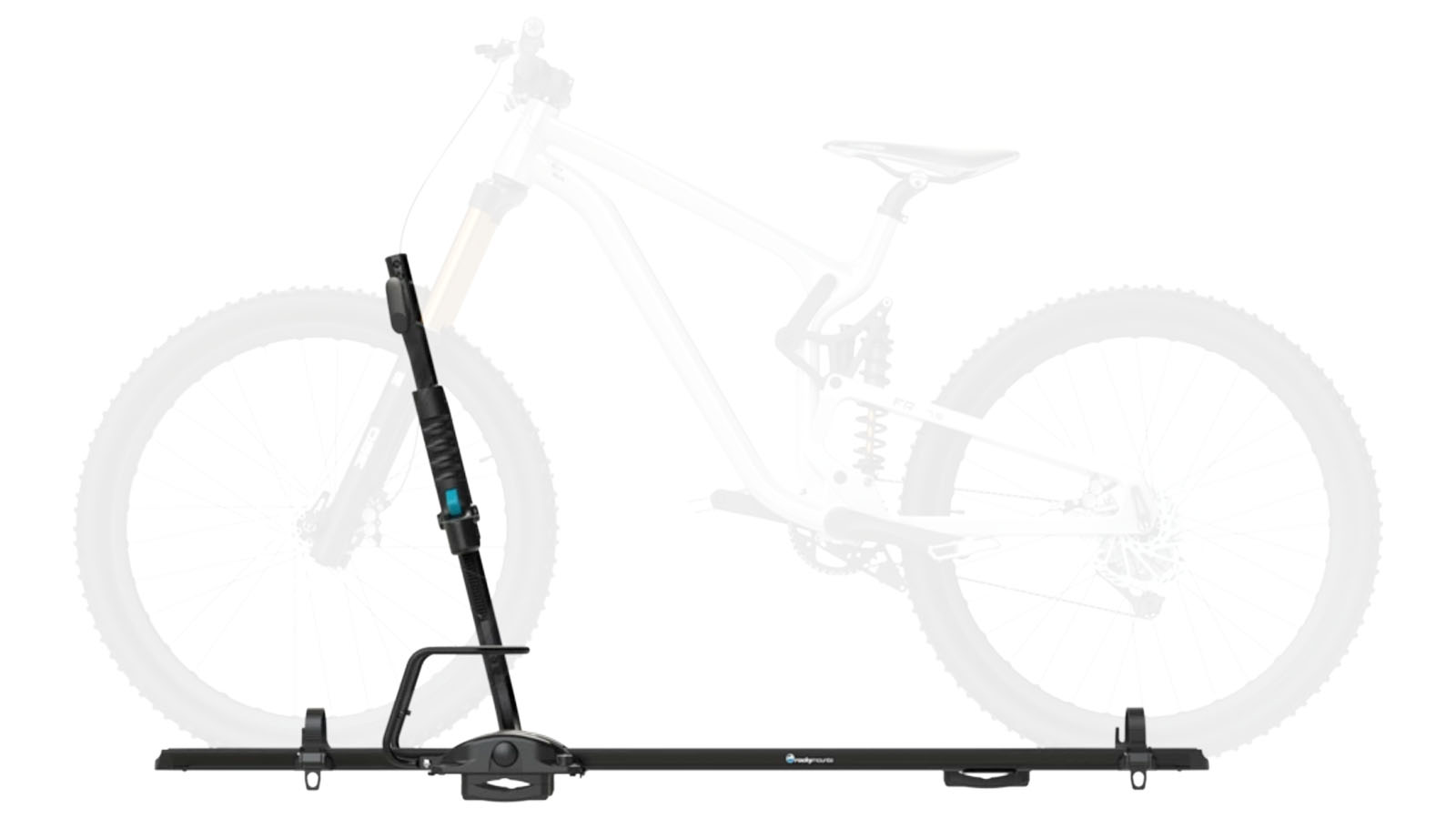
RockyMounts TomaHawk
Our expert review:
Specifications
Reasons to buy
Reasons to avoid
The RockyMounts TomaHawk is a roof-mounted tray which utilises a front-wheel hook to secure the bike. A wheel wicket helps to balance the bike once it's in the tray, while dual ratchet straps and a wheel hook with a lower grip and mechanism lock everything down tight.
The rack itself will work with any style crossbar and can carry bikes of all sizes, from your Brompton up to a fat bike with 5in wide rubber.
As with all of RockyMounts' products, the TomaHawk and all of its parts are backed by a lifetime warranty.
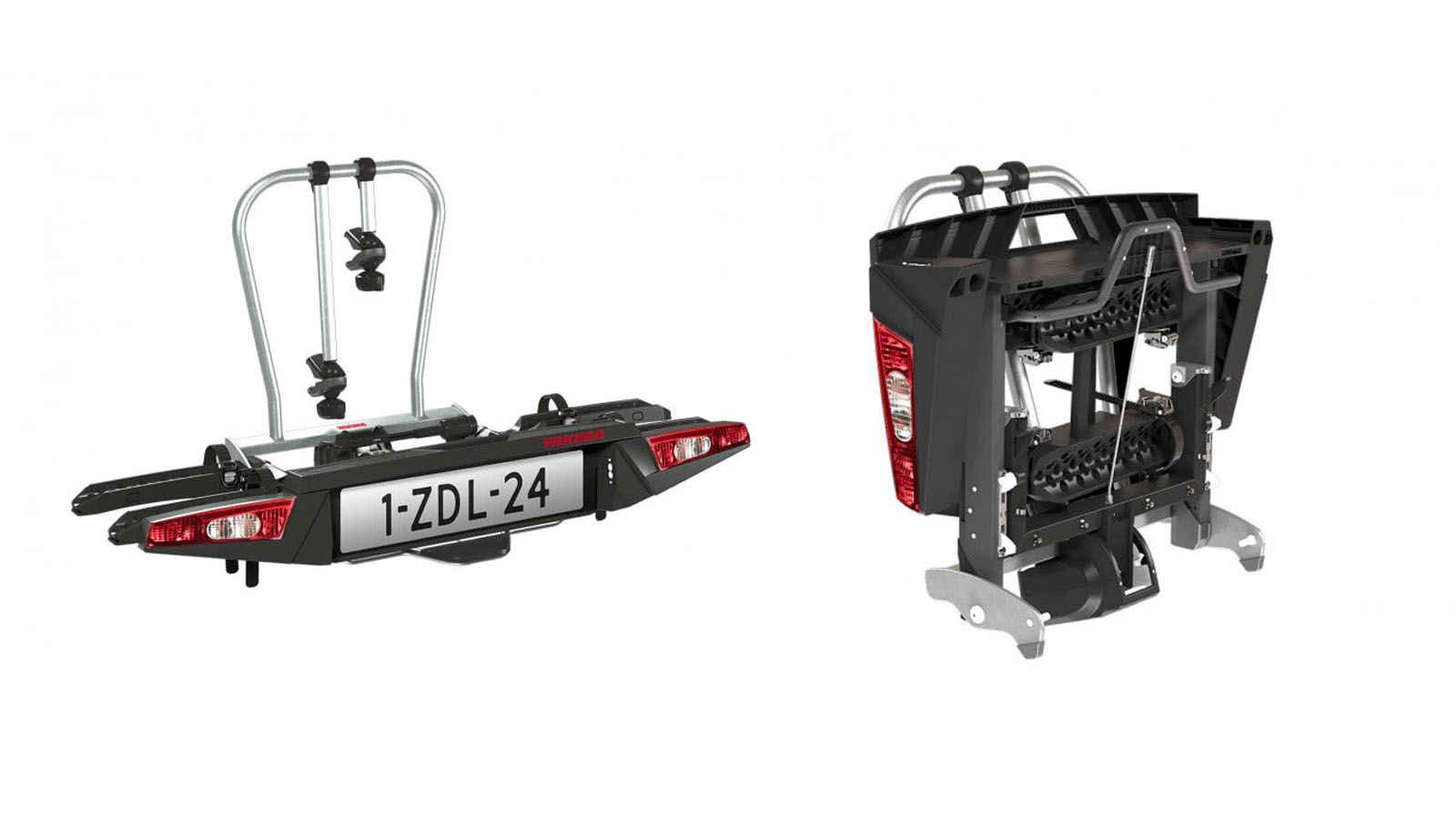
Yakima FoldClick 2
Specifications
Reasons to buy
Reasons to avoid
Yakima’s FolkClick rack utilises the towbar instead of the hitch receiver, and has a surprisingly high weight limit - you can easily carry two e-MTBs without worry. What we love about this rack is not only how quick and easy the install process is, but also that it only weighs about 14kg, folds away into the size of a large toolbox, has tail lights, and an illuminated number plate holder - it even comes with a little ramp to help you get your bike up.
With two sets of wheel trays, it's a design that uses arms and clamps to grab onto your bike's frame. A foot pedal unclips the base of the rack to tilt it out of the way so you can quickly get into your trunk, and locks for the bikes and the rack itself are included.
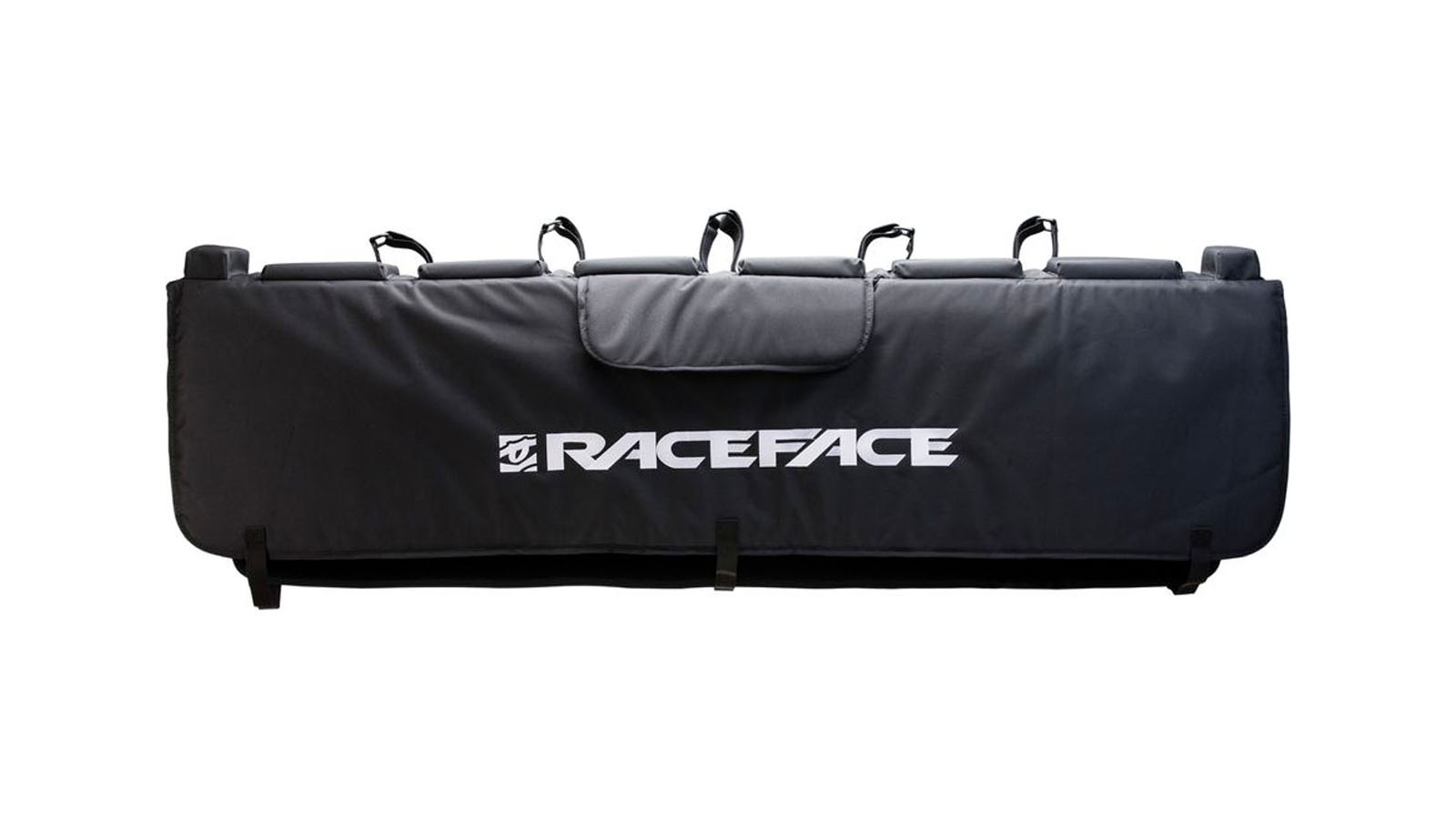
Race Face Tailgate pad
Specifications
Reasons to buy
Reasons to avoid
For something so simple, there is a major difference between a mediocre tailgate pad, and an outstanding one, the Race Face Tailgate Pad is the latter. Made from DWR 600D PVC fabric it will take plenty of abuse, while the interior is microfibre lined to go easy on your paintwork.
The pad comes with Velcro straps on the top to secure the fork to the pad. It also uses foam-moulded bumpers on the back which create grooves for the bikes to slot into so they don’t flop around in transit.
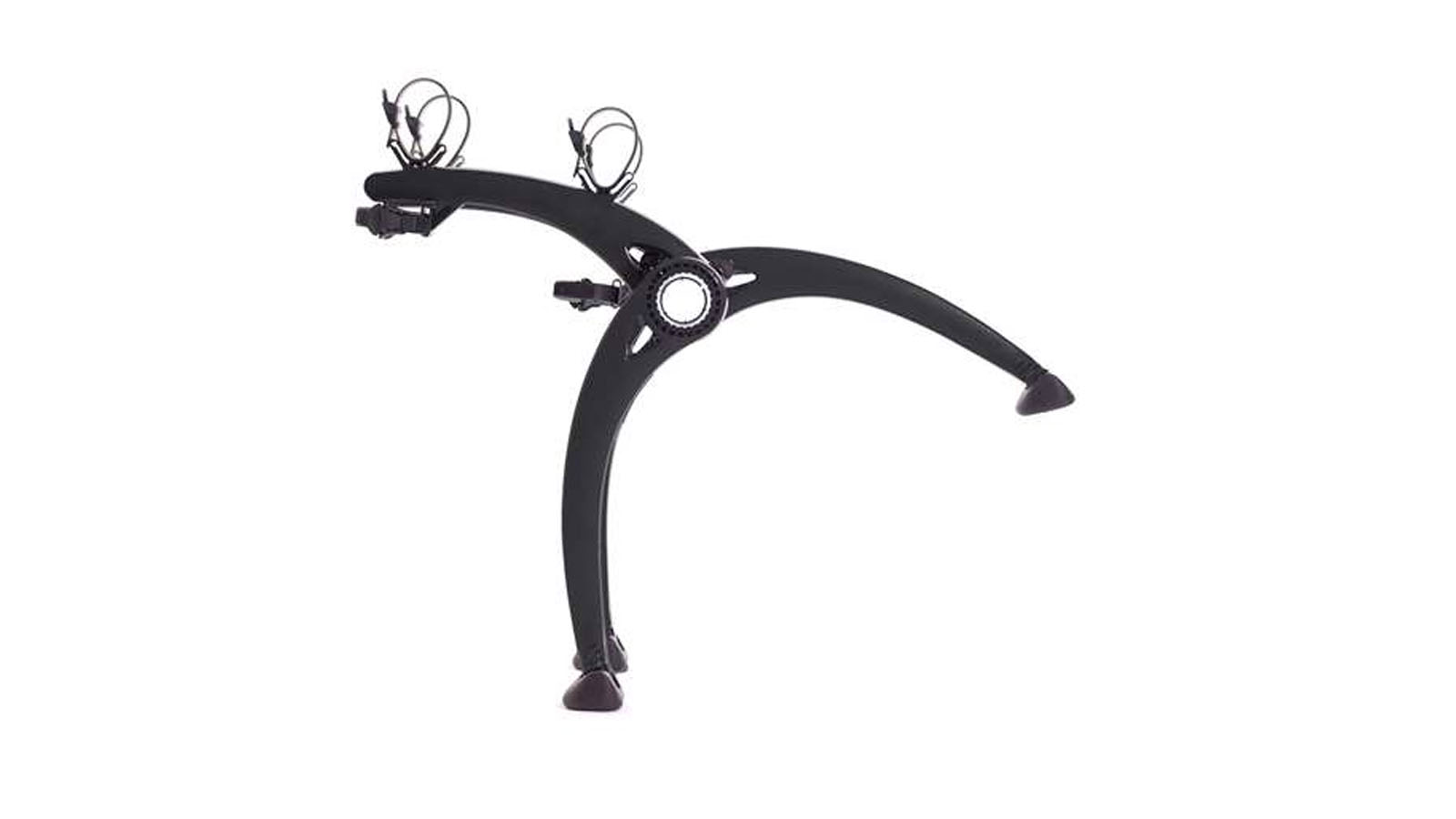
Saris Bones 2
Specifications
Reasons to buy
Reasons to avoid
If it ain't broke, don't fix it, and that is the mantra Saris has used with its Bones 2 Bike trunk/boot rack. The design was first introduced in 1996 and hasn't changed all that much since.
It's available in two- and three-bike versions, the rack is made with 100 per cent recyclable materials. Everything from the articulating feet to the arms is adjustable to make the rack fit onto just about any car - including those with small spoilers.
The arm that supports the bikes themselves is curved which provides extra clearance, and the seatpost strap prevents the bikes from wobbling around too much when everything is mounted up. Unfortunately, the front wheel is still free to wave around, something which no rack of this style efficiently addresses.
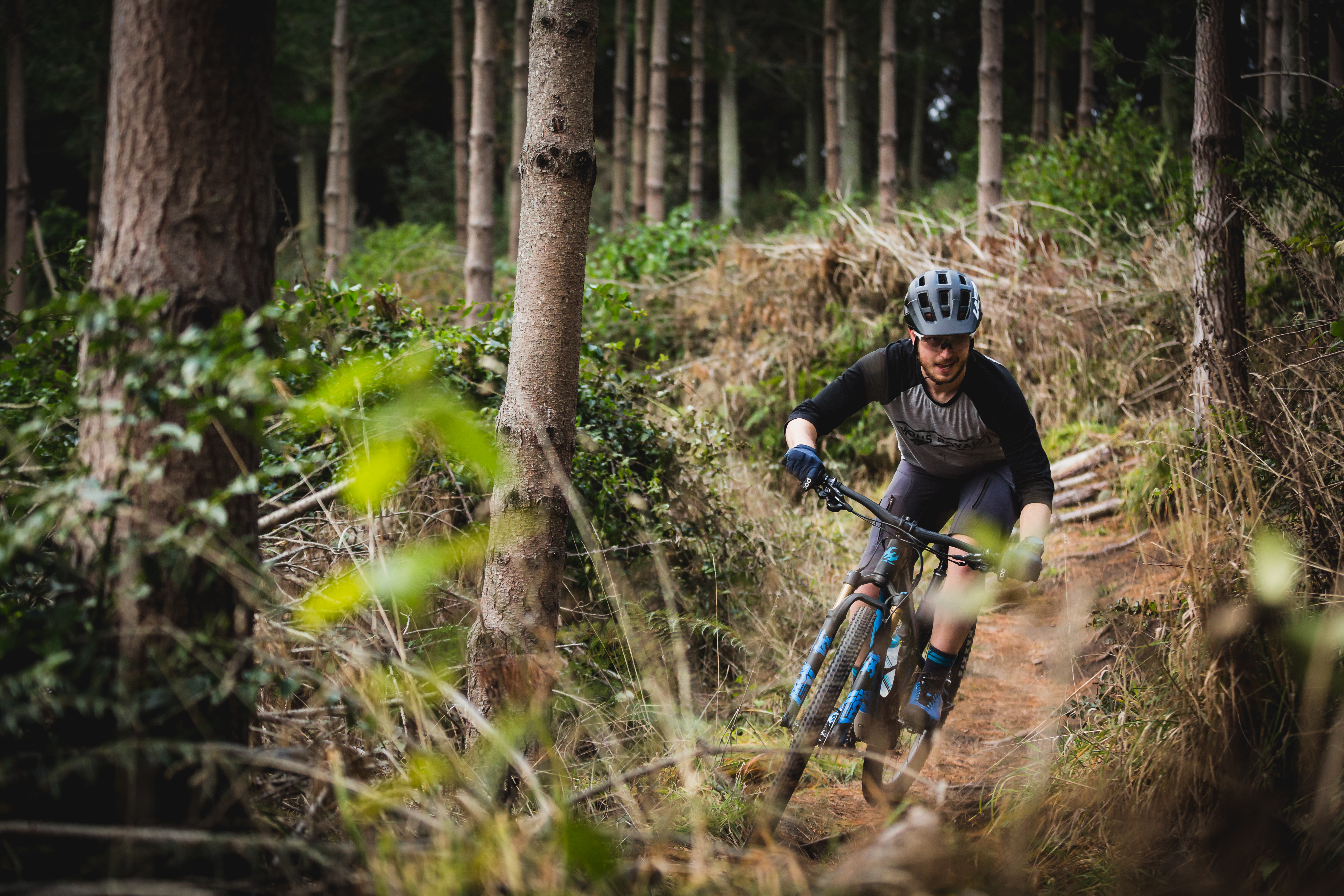
Born and bred in Colorado, and now based in Australia, Colin comes from a ski racing background and started riding as a way to stay fit through the summer months. His father, a former European pro, convinced him to join the Colorado State University collegiate cycling team, and he hasn't stopped since. It's not often he pins on a number nowadays, and you'll likely find him in search of flowy singletrack, gravel roads and hairpin corners. Colin has worked at Bikeradar and is a regular contributor to Australian Mountain Bike and Cyclist magazines.
Rides: BMC Team Machine SLR01, Trek Top Fuel 9, Ibis Ripley
